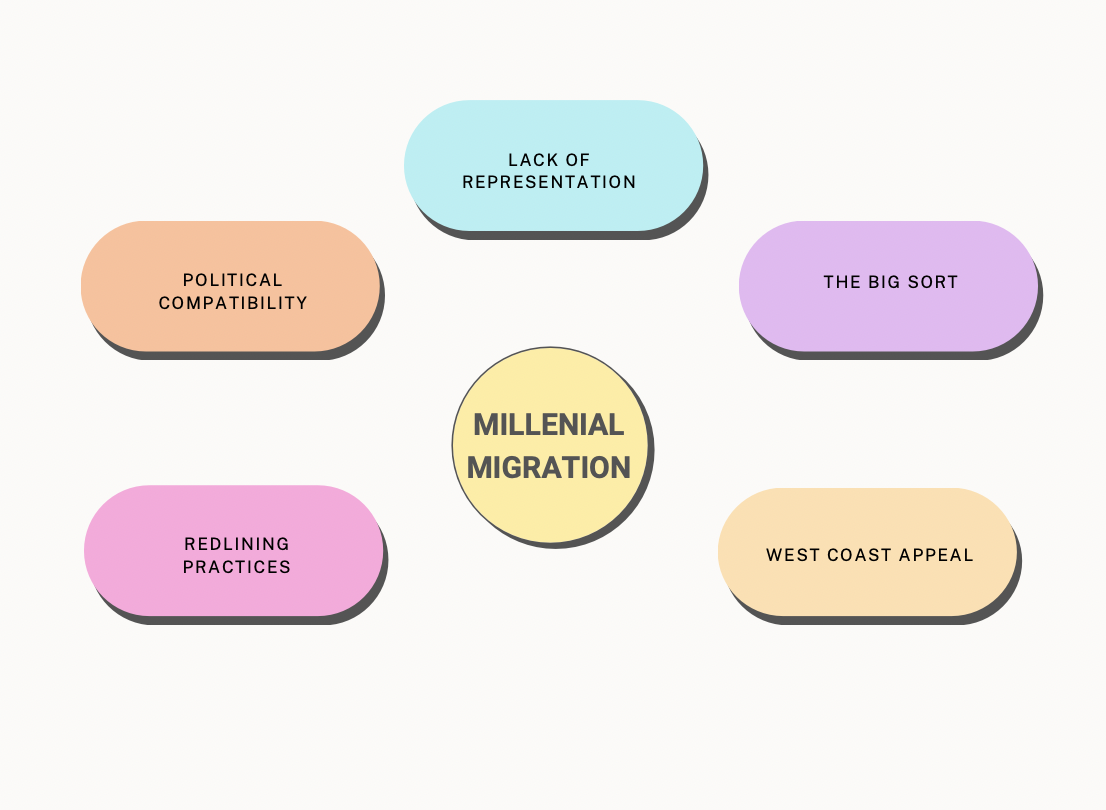Wisconsin’s population demographics are changing. A Forward Analytics analysis published last month sheds light on Wisconsin’s population challenges.
Between 2012 and 2020, the state saw a net migration of more than 17,000 families headed by people under 26, and 43,000 millennials from 2010-2018, out of Wisconsin. These figures are likely underestimated, due to many not filing income taxes as independents. Young, family-forming age groups are crucial for fiscal stability, tax revenue and employment in the state.
Young people are not the only ones leaving Wisconsin. A net loss of 4,637 baby boomer families occurred during the eight-year period between 2012 and 2020. Additionally, among families who moved, those with incomes over $200k left the state at much higher rates than lower-income families in the same period. People are flocking from Wisconsin, taking potential income tax revenue with them.
Millennials and recent graduates are moving to large metro areas within the Midwest and across the country. A quarter of movers from this age group moved to the largest cities in the region – Chicago, Minneapolis and Detroit. Thirty-five percent chose to relocate to other major cities throughout the nation. Forward Analytics cites the amenities, opportunities for employment and higher wages in major urban areas as the biggest reasons for this migration trend.
Why are these people moving? What impacts does this migration have on the state? How do state officials work to make Wisconsin a place more desirable for workers?
The Big Sort – a trend of domestic migration fueled by the desire for political compatibility – is another explanation for young people choosing to leave Wisconsin. As the millennial generation in the state leans overwhelmingly Democratic, it makes sense to see many from this group move from Wisconsin to more progressive and urban areas of the country and the Midwest, especially in the post-Roe era.
A demographic shift this large will undoubtedly have major electoral consequences on the politics of the state. Wisconsin, once a member of the Democratic “Blue Wall,” a collection of states where Democratic presidential candidates consistently won, has now become a decisive battleground in partisan elections. As younger Wisconsin voters, who predominantly vote for Democrats in elections, move out of the state, the Republican Party has an opportunity to dominate on the state and national levels.
The GOP of Wisconsin is on the verge of closing in on a supermajority in both chambers of the State Congress. A supermajority would give Wisconsin Republicans the ability to override vetoes issued by the Governor, thus allowing the passage of controversial conservative bills on issues like abortion, voting rights and education. This rightward shift of the state’s political climate would only worsen the amount of young migration from Wisconsin, as they flee to more progressive states.
To address political migration, the state government of Wisconsin must reform redistricting practices to guard against extreme partisan gerrymandering. Doing so would challenge partisan dominance and ensure a more accurate representation of the people of Wisconsin in state government.
In 2011, state Republicans managed to win control over both chambers of the State Congress and the governorship. With this majority, they redrew districts without public oversight, resulting in future decisive electoral victories for the GOP in the Assembly, despite losing the state’s popular vote to Democratic voters.
Gerrymandering is a difficult issue to resolve when any change requires consent from the political party in power – in other words, the party actively benefiting from the unfair districts. Nearly 9-in-10 Wisconsin voters oppose gerrymandering, yet Princeton University’s Electoral Innovation Lab gives Wisconsin’s districts an ‘F’ in partisan fairness. But, the adoption of a redistricting model like the one used in Iowa could offer a potential solution to restoring voting power to young and underrepresented voters of Wisconsin.
The Iowa model is a redistricting process that takes the responsibility for drawing maps away from partisan officials, transferring the decision to a non-partisan committee instead. The committee uses strict census data–devoid of political interference – as well as insight from public hearings held across the state – when drawing the maps to guarantee transparency and oversight. This model, if implemented in Wisconsin, would be a tremendous step forward in making sure our youth are represented in state government, giving the demographic more reason to stay in-state.
The detrimental economic impacts of losing families from Wisconsin in their prime working ages present an urgent crisis for governments and businesses of the state. A shrinking workforce heightens the already-dire labor shortage facing Wisconsin businesses across every industry. With the loss of Gen Z and millennial residents also comes the loss of potential family formation within Wisconsin. Young people moving away cascades migration effects down to the next generations, only exacerbating the loss of former Wisconsinites on political and economic levels. Wisconsin has a large incentive to prevent the drain of younger generations from the state.
The state of Wisconsin has a lot to offer, from the cost of living rates below the national average to an exemplary public education system. According to the US News Best States Ranking, Wisconsin is rated as the eighth best state overall across more than 70 metrics, with top-10 status in education, opportunity and fiscal stability categories. But, it is imperative that Wisconsin make tremendous strides to ensure young residents feel represented in governments across the state if the retention of working-age residents remains a priority.
Jack Rogers ([email protected]) is a freshman studying economics and Chinese.








